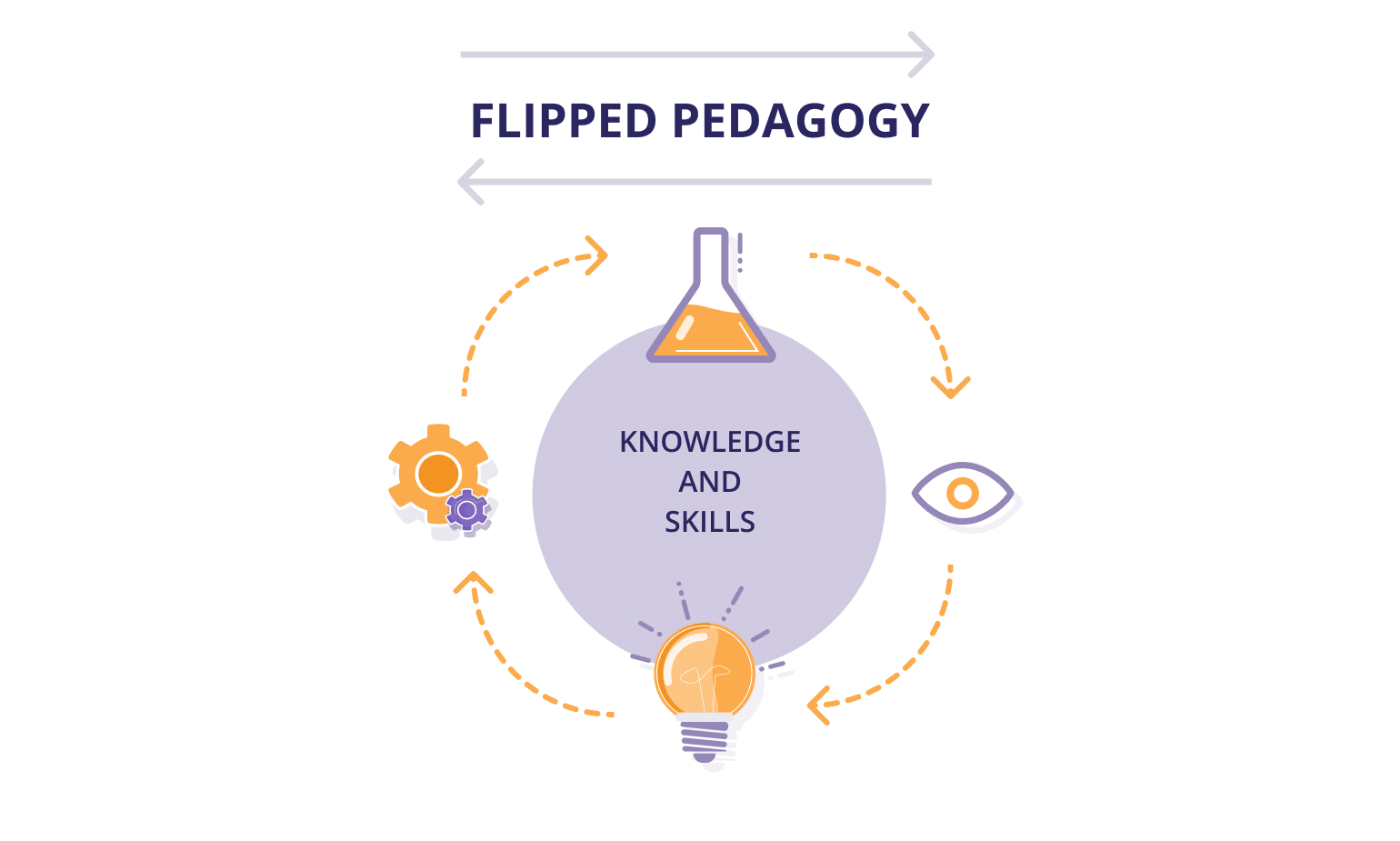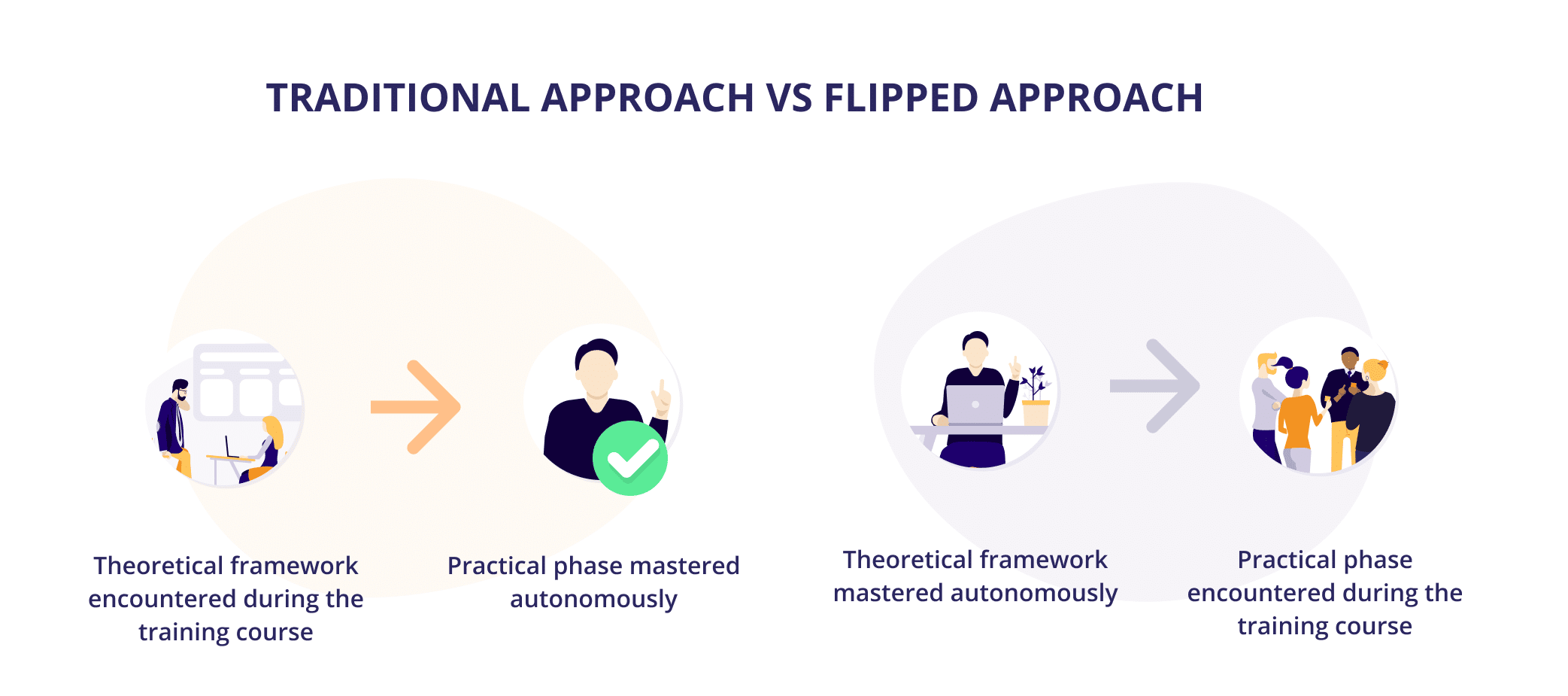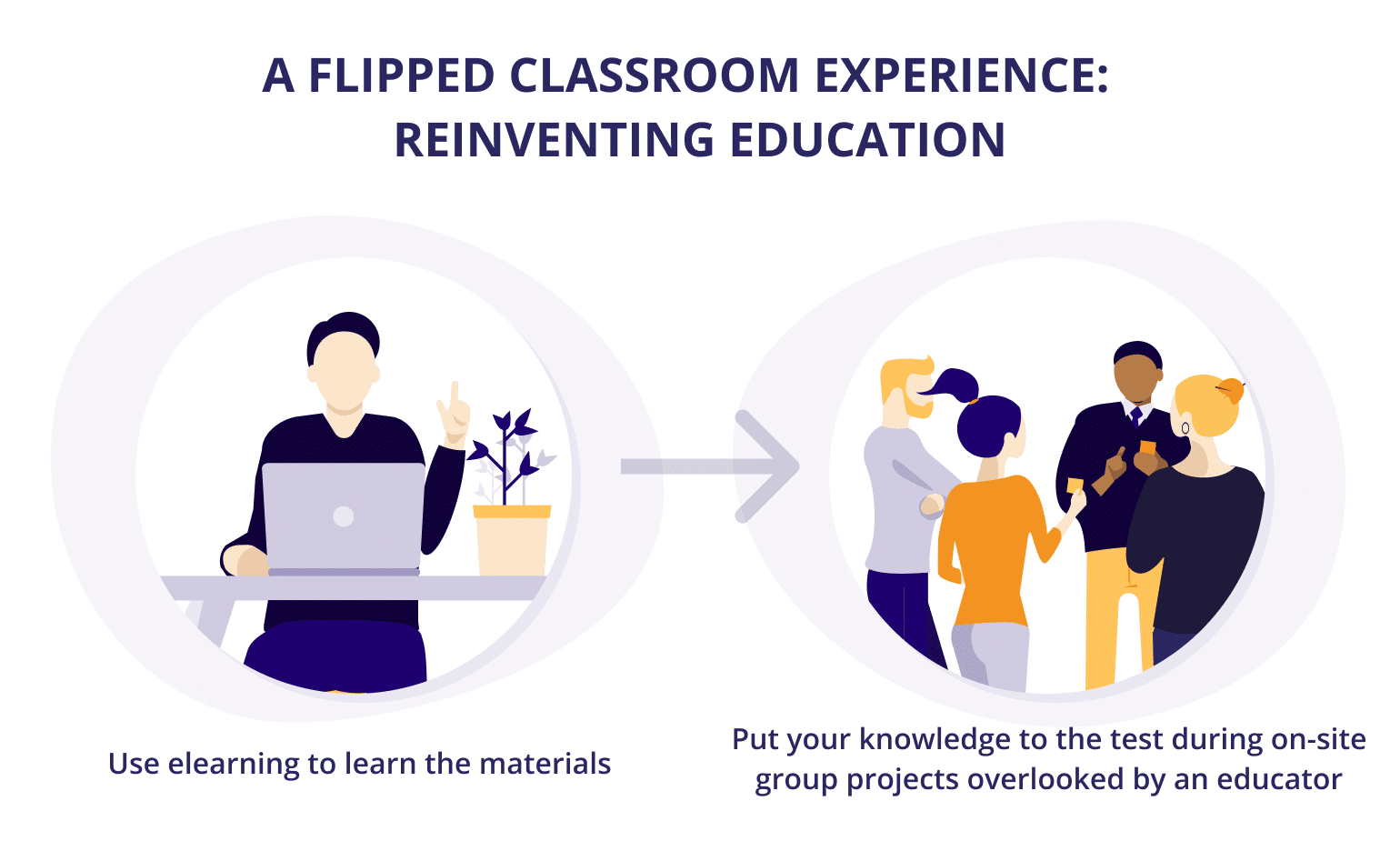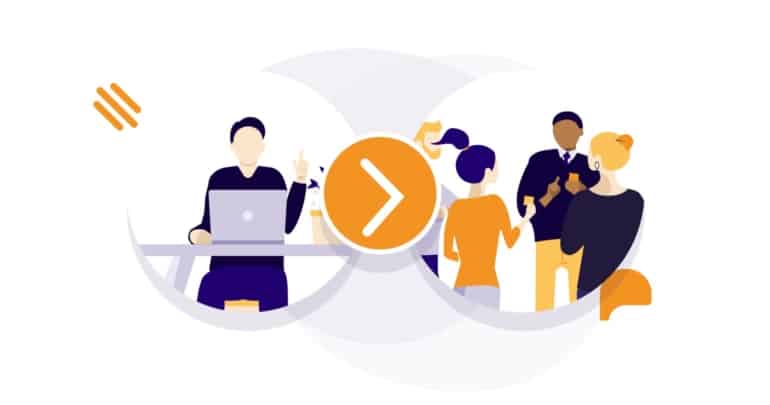Flipped learning is very different from traditional teaching methods. Here, the learner is a proactive participant in the training process. This concept was first used in schools and made its way into the corporate world several years ago.
What is flipped learning?
Where it began
Flipped learning first appeared at Harvard in the 1990s. This technique was developed by Eric Mazu, a physics professor, when he launched his “peer instruction” programme. Throughout his career, he noticed that “active” learners were more effective and retained information presented during lectures better than “passive” learners.
In the 2000s, mathematician Salman Kahn, also from Harvard, started posting videos on YouTube to help children who were struggling.
His videos quickly went viral. This was the start of Kahn Academy, which was based on this new teaching approach. With this learning model, learners study theoretical principles independently prior to the training. Then, trainers and learners come together for the practical learning phase. Learners are divided into groups to promote interaction. This teaching method is the opposite of what is used in traditional education systems.
Flipped learning is becoming more common as new technology becomes available. These days, we can easily access a wide variety of content whenever we want to. Time and space are no longer barriers. Plus, these technological advances make it possible to create innovative training tracks, such as blended learning that combines traditional in-person classes and e-learning modules.

How it works
Flipped learning is a novel teaching method that puts the learner at the centre of the learning process.
And it typically uses the same approach for each course. The learner receives training content in digital format (video, podcast, lecture, etc.) and studies it at home at their own pace.
Once in class, the time is devoted to discussing content, asking questions and working on group projects related to the session topic. What makes this method useful is the interaction. The professor is no longer the only active participant, in contrast to lectures.
To summarise, students learn the theory asynchronously (meaning, without a trainer present) and put it into practice synchronously (in a group, with a trainer present).

There are two types of flipped learning:
- Type 1: the initial model where the learner studies concepts (simple tasks) at home and completes exercises in class (complex tasks).
- Type 2: the learner completes activities like searching for information and preparing for presentations and debates that will then be used in class.
These two models have the same objective: for the student to actively participate in their learning.
Why use this method
This method was developed because professors saw that traditional training did not match with the varied pace of different learners. Sometimes it was too slow, sometimes too fast. Students had to tackle many learning challenges. A solution was needed to improve on the traditional model of knowledge sharing that was mainly used in school systems, particularly in higher education.
As we have seen, one of the main differences between the two methods is how much the learner interacts. With traditional teaching, the learner is on their own. During class, the professor does not necessarily have time to answer questions and students do not spend much time talking about the session’s topics. On the other hand, with flipped learning, the participant has to interact with other learners and sometimes talks more than the trainer during group work.
Why it works for businesses
Flipped learning is a model that works quite well in business. Active learning methods generally match the expectations of trainers and learners alike.
For learners
Business learners are individuals with experience working independently on training topics that correspond with their position in the company. They can study at their own pace at home whenever it suits their schedule.
They find it even more enjoyable to share ideas in work groups. Interaction among employees improves teamwork and creates a sense of connection.
Two types of skills can be strengthened with these methods:
- hard skills: job skills that the learner studies independently during the asynchronous phase
- soft skills: skills related to relational and emotional intelligence and communication, used during the synchronous phase
In flipped learning, participants can actively share information learned by organising brainstorming sessions, creative workshops or presentations.
For trainers
Sharing information is more enjoyable for them, as well. When the group reviews the topic, the learners will already know the information and can easily work together. The trainer can be more present for learners. They can address each person’s ongoing challenges, customise their responses and highlight the key ideas learners should remember. Discussions may be more interesting because learners will have had time to familiarise themselves with the topic and explore it so they understand it better than if they were learning about it in the traditional education system.
How to implement this learning method with Beekast
Use Beekast to apply this new teaching practice with synchronous and asynchronous tracks. Students will actively participate in learning, complete assessment activities right on the platform and provide feedback on the activities you create.
The platform provides many tools that enable the learner to study independently while also encouraging participation and engagement during workshops.
Asynchronous phase
Create asynchronous sessions in Beekast so that learners can complete activities on their own and view your slides and documentation at any time.
Add a board so that the learner can ask any questions. The trainer can then respond to them easily and prepare to address any problems learners might have during the synchronous phase.
Synchronous phase
The synchronous phase takes place with the group once the asynchronous phase is finished.
Create various activities in Beekast for multiple learners to work on together, like board activities to generate ideas or metaphor activities to discuss a project’s strengths and constraints using a visual analogy. Add instructions right on the platform to help the group work together more effectively.

Assessment
Once both phases are finished, the trainer can evaluate learners using various activities like multiple choice quizzes (MCQs), surveys or challenge activities. This enables you to quickly assess whether learners have assimilated new skills during the training.
To summarise, the trainer can create every component of their training track in Beekast, from teaching new concepts to evaluating learners, all in an interactive format. Since each student will be an active learner, there will be lots of constructive discussion. Training sessions will be more enjoyable and better assimilated by learners. The trainer will also be able to track learner attendance and understanding.
Thanks to Beekast and other new digital tools, this new training system is easily accessible and anyone can create flipped learning courses.
